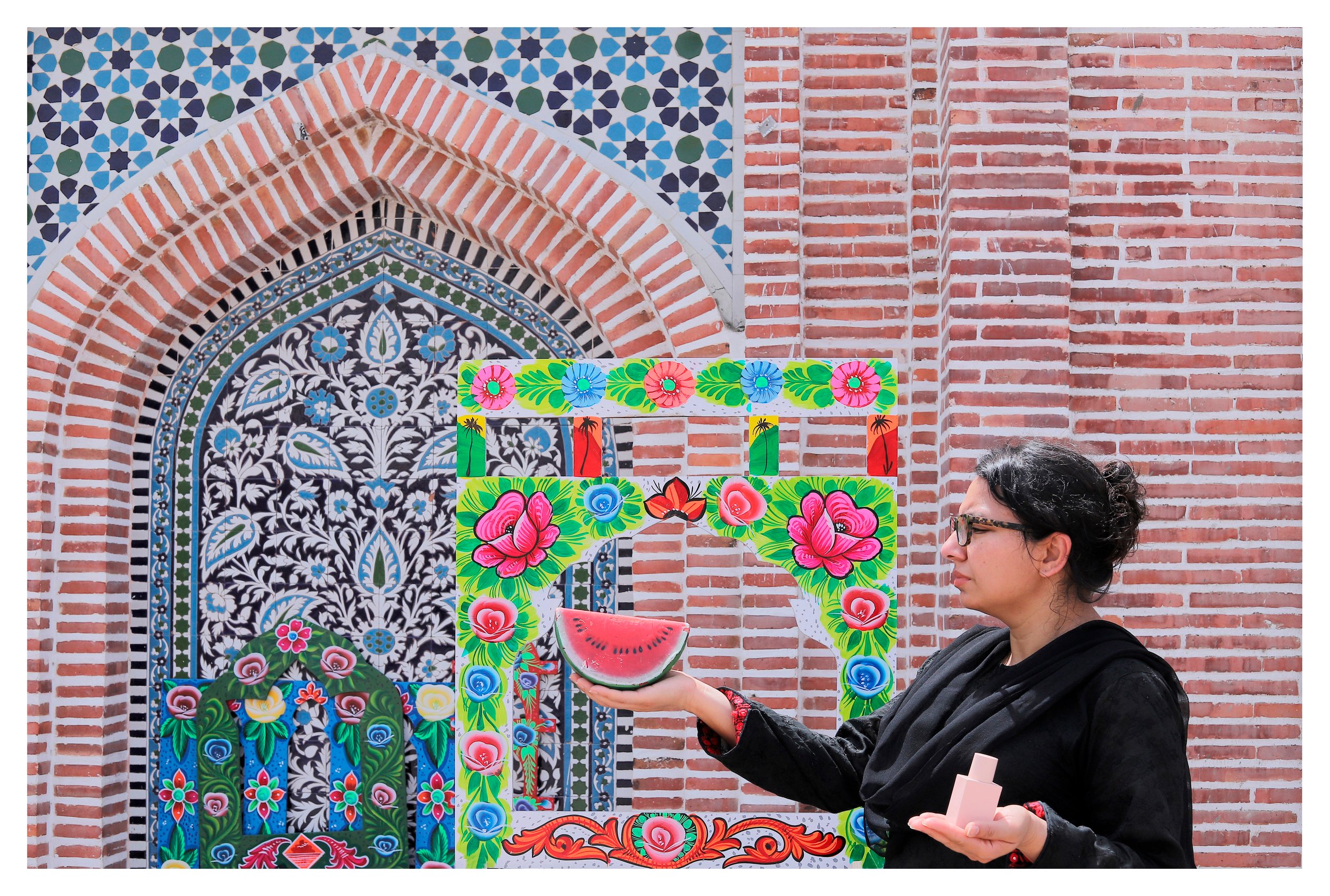After Jahangir
After Jahangir is an installation inspired by the Mughal emperor Jahangir (1569-1627) of India. Jahangir was given the name “World Seizer’’ for his preoccupation with collecting. He had a keen attentiveness towards objects and he enthusiastically acquired plants, animals, minerals, and oddities from different parts of the globe. He scientifically recorded, measured, enumerated, and tested his possessions. His honorific speaks to Jahangir’s self-conception as a “naturalist”, and an acquirer of objects that were meant to amaze, impress, and project power.
In this photography, performance and painting series, I re-perform Jahangir’s gesture with the help of students at Habib University, Karachi. We replace Jahangir’s articulations of his refined connoisseurship by our own contemporary consumption habits.
In this photography, performance and painting series, I re-perform Jahangir’s gesture with the help of students at Habib University, Karachi. We replace Jahangir’s articulations of his refined connoisseurship by our own contemporary consumption habits.
By creating a series of images depicting entanglements of historical representations and placing ourselves within this system, I am interested in imagining new and unique possibilities of thinking about matter, materiality, and the ecology. Jahangir’s portraits represent an ancient, non-western, and Islamic form of ecological, spatial, and material awareness. This awareness was extroverted and hierarchical. My embodiment of Jahangir’s gesture is an ecofeminist critique, an intervention, and an act of reading backward Mughal dynasty projections of power. As I assimilate and subsume Jahangir’s gesture, I am interested in engendering in the viewer questions and ideas about non exploitative commitments for relating to matter and the material world.
The paintings in this series are displayed on rehel (Islamic book holders) to establish a viewing practice that originates at the source of the material being utilized and represented.












